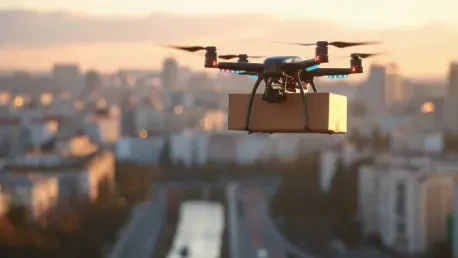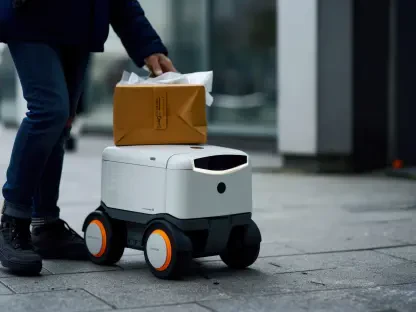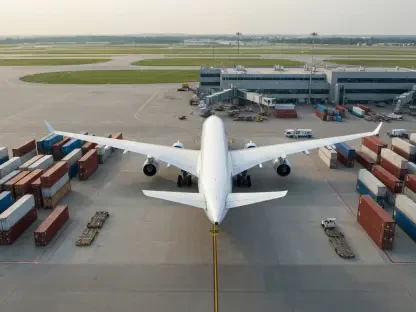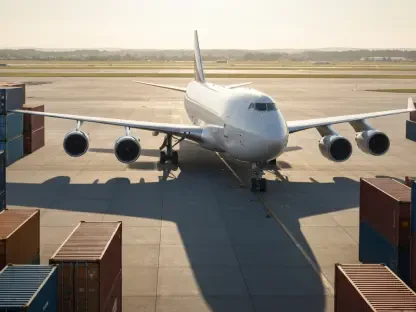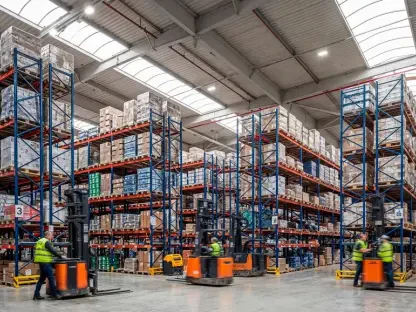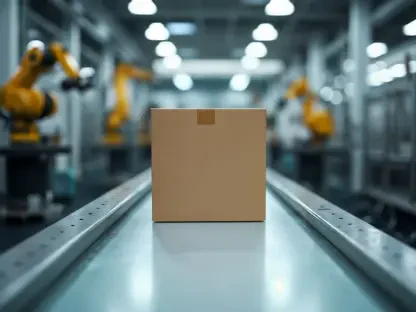In a rapidly evolving retail landscape, Walmart’s expansion of its drone delivery program marks a significant step in redefining last-mile logistics. With decades of experience in supply chain and logistics, Rohit Laila offers his insights into what this means for the future of retail innovation and technology.
Can you explain the motivation behind Walmart’s decision to expand its drone delivery program to three new states?
Walmart’s ambitious expansion into drone delivery is driven by the rising consumer demand for speed and convenience. The decision to branch out further is part of a strategy to solidify their position as a leader in ultra-fast delivery, outpacing competitors who are also vying to meet these demands. This expansion is not just a response to consumer expectations but a part of a long-term vision to integrate high-tech solutions into logistics and supply chains.
What specific advantages does Walmart see in using drones for last-mile logistics?
Drones offer several competitive advantages in last-mile logistics. They can bypass typical road traffic constraints, offering rapid delivery services that are essential for meeting the increasingly tight timeframes demanded by consumers today. Moreover, drones have the potential to efficiently reach areas that are geographically challenging for traditional delivery methods, whether urban centers or rural locations.
How does Walmart’s drone delivery initiative differentiate itself from its competitors in the retail landscape?
Walmart has taken a meticulous and strategic approach to its drone delivery program. This differentiation is evident in their emphasis on partnering with leading drone technology firms, which ensures both reliability and safety. Additionally, Walmart’s clear pathway toward integrating drones with their existing digital transformation efforts creates a synergy that many competitors have yet to achieve.
Can you share insights into the partnerships Walmart has formed with drone technology firms? How do these partnerships ensure reliability and safety?
These partnerships are crucial as they provide Walmart access to cutting-edge drone technology, vital for maintaining high standards in reliability and safety. By collaborating with specialized firms, Walmart can leverage advanced navigation systems and robust safety protocols, minimizing risk and enhancing service quality. These collaborations are not mere transactions but strategic alliances ensuring that their drone initiatives are sustainable and scalable.
Are there particular challenges Walmart anticipates in expanding drone delivery services to diverse geographic and demographic markets?
Certainly, expanding into new markets involves navigating a host of challenges. Geographic diversity means contending with varied terrains, weather conditions, and population densities, each posing unique logistical issues. Demographically, different regions may have varying levels of acceptance or expectation for drone deliveries, requiring tailored approaches to service deployment.
How does Walmart intend to overcome urban density challenges or rural delivery logistics with drone technology?
In urban environments, drone deliveries can circumvent congested streets, thereby speeding up delivery times. In rural areas, drones can overcome the limitations posed by longer distances and sparse road networks. Walmart is likely focusing on optimizing flight paths and deploying drones capable of handling varied payload requirements to cater to these distinct challenges effectively.
How does this drone delivery expansion align with Walmart’s broader digital transformation goals?
The expansion is a critical component of Walmart’s larger digital strategy, which aims to enhance e-commerce capabilities and improve fulfillment services. By incorporating drones into their logistics network, Walmart is not only meeting immediate delivery demands but also paving the way for broader digital innovations in how orders are processed and fulfilled.
What role do drones play in addressing the consumer expectation for ultra-fast delivery?
Drones play a pivotal role in meeting these expectations by drastically reducing delivery times. With the ability to deliver items within mere minutes of an order being placed, drones address the “need it now” culture cultivated by modern consumers accustomed to swift digital transactions and services.
Can you elaborate on the regulatory challenges Walmart faces in expanding commercial drone operations?
Navigating the evolving landscape of drone regulations poses significant challenges. Federal and state guidelines are still developing, requiring Walmart to engage in active dialogue with authorities to ensure their operations are compliant with both airspace safety standards and privacy concerns. This involves close collaboration with governmental bodies like the Federal Aviation Administration.
How does Walmart ensure compliance with federal and state airspace safety standards?
Compliance is ensured through rigorous adherence to established airspace safety protocols, developed in consultation with federal and local regulators. This may involve deploying advanced monitoring and management systems, ensuring each flight is logged, and following clear procedures around no-fly zones. Walmart’s partnerships with drone tech firms likely also provide much-needed expertise in this area.
What operational hurdles does Walmart anticipate while scaling its drone fleets?
Scaling drone fleets involves several operational challenges, such as securing sufficient capital investment and developing the requisite technical infrastructure. Other hurdles include hiring skilled personnel, managing fleet maintenance, and ensuring tech upgrades keep pace with evolving operational demands.
How does Walmart plan to address technical challenges such as battery life, payload capacity, and weather resilience?
Addressing these challenges will involve investing in research and development to enhance drone designs continually. Improving battery performance and payload capacity is crucial for extending the service range and load capabilities of drones. Weather resilience also requires integrating robust systems capable of navigating various atmospheric conditions without compromising safety or efficiency.
What is Walmart’s strategy to maintain a balance between speed, cost, and scalability in its drone delivery model?
Walmart is likely focusing on optimizing operational efficiencies—using data analytics to refine delivery algorithms and fleet management—ensuring that speed is enhanced alongside cost-effectiveness. By leveraging economies of scale and investing in efficient technologies, Walmart can maintain an attractive balance that supports expansive growth without prohibitive costs.
How might Walmart’s drone expansion influence competitor strategies in the retail sector?
Walmart’s expansion could act as a catalyst for competitors, pushing them to accelerate their own drone delivery initiatives. The need to keep pace with the rapid advancements in service delivery might lead to broader innovations in logistics methods, possibly spawning collaborations or new technology investments industry-wide.
Is there a potential for widespread industry innovation in delivery methods as a result of Walmart’s expansion?
Absolutely. By advancing their drone capabilities, Walmart is not just enhancing its own service model but setting a new standard for the industry. This could stimulate further innovation among retailers, leading to a diverse array of new inventions in delivery technologies and methodologies.
How does Walmart see the future of retail logistics with the integration of drone delivery services?
Walmart envisions a future where drones are integral to a seamless and efficient logistics framework, drastically reducing delivery times and enhancing overall customer satisfaction. They foresee a logistics landscape where unmanned aerial vehicles are common, catering to instantaneous consumer demands and redefining consumer-retailer interactions.
How important is customer experience in shaping Walmart’s drone delivery strategy?
Customer experience is at the forefront of Walmart’s strategy, driving their commitment to rapid, reliable delivery services. By prioritizing speed and convenience, Walmart aims to enhance customer satisfaction and loyalty, ensuring their drone delivery services are seamlessly integrated into everyday shopping experiences.
How is Walmart measuring the success of its drone delivery expansion initiative?
Success is measured through key performance metrics such as delivery speed, reliability, customer satisfaction scores, and operational efficiency. By closely monitoring these indicators, Walmart can fine-tune its operations, ensuring the service continually meets or exceeds consumer expectations while remaining cost-efficient.
